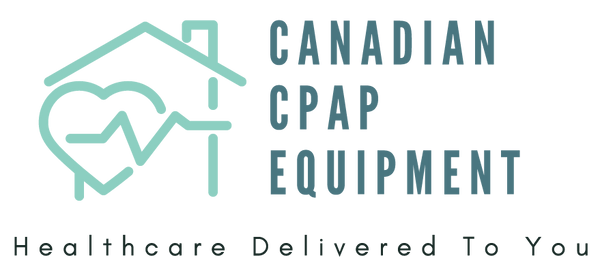Untreated sleep apnea can wreak havoc on your entire body. Addressing your sleep apnea, whether obstructive or central in nature, is of the utmost importance for longevity and quality of life.
Sleep apnea machine work to open the airway and restore normal breathing patterns that lead to uninterrupted sleep. Whether obstructive or central, treating your sleep apnea with a positive airway pressure (PAP) machine can improve your sleep quality, allowing for the natural processes to occur during each sleep phase.
In this article we will explore the ways a sleep apnea machine can improve our sleep quality and overall health.
1. Improved Daytime Alertness and Cognitive Function
In 2024, the Canadian Journal of Respiratory Therapy stated in an article that Continuous Positive Airway Pressure (CPAP) therapy has been shown to significantly reduce daytime sleepiness and improve cognitive functions such as memory and concentration. This is particularly beneficial for individuals with obstructive sleep apnea (OSA), as it enhances their ability to perform daily tasks and improves overall quality of life (source).
Want to learn more about sleep apnea machines? Click here.
2. Enhanced Cardiovascular Health
Treating OSA with CPAP therapy can lead to better control of blood pressure and reduce the risk of cardiovascular diseases. Effective treatment has been associated with a decrease in hypertension and improved heart health outcomes.
3. Lowered Risk of Stroke
Continuous Positive Airway Pressure (CPAP) therapy has been linked to a reduced risk of stroke in individuals with obstructive sleep apnea (OSA). A national study involving over 5,000 older participants found that consistent CPAP use was associated with a significant decrease in stroke risk. Specifically, each month of CPAP adherence corresponded to a 2% reduction in stroke risk over a 25-month period (source).
4. Improved Quality of Life
Long-term use of CPAP therapy has been associated with significant improvements in the quality of life for individuals with moderate to severe sleep apnea. Patients report better sleep quality, increased energy levels, and overall enhanced well-being.
5. Better Management of Comorbid Conditions
Effective treatment of OSA with CPAP therapy can lead to better control of comorbid conditions such as diabetes and heart failure. By improving sleep quality and reducing intermittent hypoxia, CPAP therapy contributes to the overall management of these chronic diseases.
6. Reduction in Mortality Rates
Studies have shown that adherence to PAP therapy in patients with OSA is associated with a reduction in all-cause mortality and major adverse cardiovascular events. This emphasizes the life-saving potential of consistent CPAP therapy usage (source).
Conclusion
Sleep apnea machines don’t just save lives—they improve them, night after night. By restoring normal breathing and reducing nightly stress on the body, these devices support essential healing and regeneration during sleep. The benefits extend beyond better rest: many individuals experience improved outcomes for conditions like high blood pressure, diabetes, and heart disease.
Even if you don’t have any known comorbidities, persistent fatigue or low energy could be a sign of undiagnosed sleep apnea. Using a sleep apnea machine can help restore your energy, sharpen your focus, and make your day-to-day life feel more manageable and enjoyable. In short, better sleep really can mean a better life.
Frequently Asked Questions (FAQ)
A sleep apnea machine—most commonly a CPAP (Continuous Positive Airway Pressure) device—keeps your airway open while you sleep by delivering a steady stream of pressurized air. This prevents pauses in breathing caused by obstructive or central sleep apnea, helping you sleep more deeply and continuously through the night.
Yes. Many users report feeling more energized and alert during the day after starting CPAP therapy. By preventing sleep disruptions and improving oxygen flow, these machines help restore the natural sleep cycle—leading to better rest and improved daytime function.
Research shows that consistent CPAP use in people with sleep apnea is associated with a lower risk of stroke. It helps regulate blood pressure and reduces nightly oxygen drops—both of which are key contributors to stroke risk.
Not at all. Even if you don’t have known comorbidities, symptoms like snoring, daytime fatigue, and poor concentration can point to untreated sleep apnea. A machine can improve your sleep quality and help prevent future health complications.
Many people start feeling the benefits—like improved alertness and better mood—within a few days to a couple of weeks of consistent use. Long-term benefits, such as reduced cardiovascular risk, improve with ongoing adherence.
Yes. The most common types include CPAP, BiPAP (Bilevel Positive Airway Pressure), and ASV (Adaptive Servo-Ventilation) machines. The best device for you depends on the type and severity of your sleep apnea, as well as other health factors. Your sleep specialist can help determine the right option.
Yes, in most regions (including Canada and the U.S.), a prescription from a doctor or sleep specialist is required. This ensures that the machine is properly calibrated to your needs and that the underlying condition is properly diagnosed.

